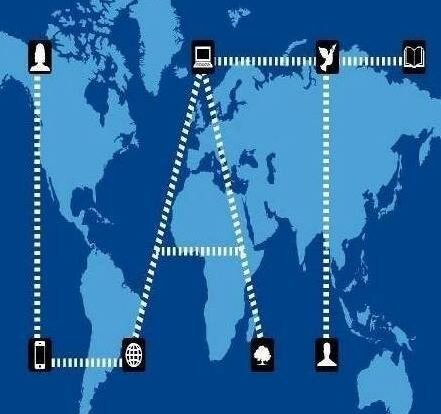The ongoing battle between the U.S. and China over TikTok has brought the popular short video sharing app under intense scrutiny. Recently, TikTok’s CEO, Shou Zi Chew, testified before Congressional lawmakers, emphasizing a “pivotal moment” for the app. While the U.S. has expressed concerns over data security and privacy, other countries, including Nepal, have also taken steps to address the impact of TikTok security risk on social harmony and cybersecurity.
Concerns about TikTok in the U.S.:
The primary concerns in the U.S. revolve around data security and potential threats to national security. Both the FBI and the Federal Communications Commission (FCC) have warned that user data, including browsing history and biometric identifiers, could be shared with China’s government. In response, lawmakers are exploring options, including a possible ban or forced sale of TikTok.
Current U.S. Response:
Lawmakers in the U.S. have engaged in a bipartisan effort to address TikTok’s influence and safeguard American data. The Committee on Foreign Investment in the U.S. (CFIUS) is conducting a review, with the threat of a U.S. ban on the app looming. The White House has cited “legitimate national security concerns” regarding data integrity. TikTok’s CEO, Shou Zi Chew, has sought to reassure lawmakers by outlining measures to protect U.S. user data, including routing it through servers controlled by Oracle.
Global Perspectives on TikTok:
The concerns surrounding TikTok are not limited to the U.S. Several countries, including the UK, New Zealand, and parts of the European Union, have restricted or banned TikTok, citing cybersecurity issues. The varying responses highlight a global concern over the app’s potential impact on data security and social harmony.
Nepal’s Decision to Ban TikTok:
Nepal, in a surprising move, banned TikTok, citing concerns about its impact on social harmony. The Nepal Telecommunications Authority (NTA) directed internet service providers to block TikTok due to its alleged role in promoting vulgarity and contributing to over 1,600 cybercrime cases in the last four years. The ban has sparked debates over freedom of expression and digital rights.
Reactions and Criticisms in Nepal:
The TikTok ban in Nepal has faced criticism from rights groups, civil society representatives, and cybersecurity experts, who view it as undemocratic and politically motivated. The government’s decision to ban TikTok has triggered petitions in the Supreme Court, challenging the constitutional implications of such a move.
Impact on Internet Traffic in Nepal:
Contrary to expectations, internet traffic in Nepal has increased by 20% after the TikTok ban. Users have turned to virtual private network (VPN) apps to bypass local censorship and access TikTok. The ban has also prompted discussions about the effectiveness of such measures and potential risks associated with VPN usage.
Future Implications and Regulatory Challenges:
The TikTok ban has raised questions about the effectiveness of such measures and the challenges of regulating technology. Experts suggest that a comprehensive regulatory approach, known as Regulatory Technology (RegTech), could be essential for balancing freedom of expression and addressing security concerns. The situation in Nepal reflects broader global debates about the role of social media platforms and the need for effective regulatory frameworks.
In the ever-evolving landscape of social media platforms, TikTok has emerged as a cultural phenomenon, captivating millions with its short-video format. However, as the platform’s popularity soars, so do concerns surrounding TikTok’s security risks. In this blog post, we’ll delve into the intricacies of these concerns, examining data privacy issues, potential cybersecurity threats, and the impact on both individual users and organizations.
TikTok’s Data Collection Practices: A Deep Dive
Privacy concerns have taken center stage as TikTok’s data collection practices come under scrutiny. The app not only gathers standard user information but also delves into sensitive areas, including email addresses, phone numbers, and even keystroke patterns. The extensive list encompasses device details, browsing history, and, notably, the contents of messages – all collected without explicit user consent.
The global debate intensifies due to TikTok’s parent company being based in China. In a climate of geopolitical tensions, suspicions arise regarding the potential sharing of user data with the Chinese government. The fear is not only centered on data privacy but also on the possibility of leveraging TikTok for propagating pro-China narratives or misinformation.
The Security Equation: TikTok’s Achilles Heel?
While TikTok asserts that it collects less data compared to giants like Facebook or Google, security experts caution against underestimating the risks. The app’s security measures have faced criticism, with concerns raised about its susceptibility to cyber-attacks. Instances of China-based teams accessing U.S. user data illicitly have fueled these apprehensions, amplifying the need for stringent security protocols.
The absence of two-factor authentication adds another layer of vulnerability, opening the door to potential phishing or ransomware attacks. With TikTok becoming a focal point for security discussions, cautionary measures, such as the U.S. Department of Defense advising military personnel to remove the app from their phones, underscore the gravity of the situation.
TikTok and the Younger Audience: A Parental Dilemma
As TikTok’s user base skews towards younger demographics, parental concerns come to the forefront. The platform’s default public settings for user profiles raise worries about exposing children to inappropriate content. The ability for strangers to send private messages further adds to the dilemma.
While TikTok offers features like “Digital Wellbeing” and “Family Pairing” to address these concerns, the efficacy of these tools is not foolproof. Parents must remain vigilant and actively engage in setting up safeguards to ensure their children’s online safety.
TikTok Alternatives: Exploring Safer Options
In response to parental anxieties and security risks, several alternative platforms have gained attention. Apps like Dubsmash, Byte, Triller, Funimate, and Chingari provide users with alternatives that boast varying privacy strengths. However, it is crucial to note that no app is entirely risk-free, necessitating ongoing awareness and scrutiny.
Securing Your TikTok Account: Best Practices
For those still committed to using TikTok, implementing security best practices becomes paramount. Adjusting privacy settings, controlling comments, duets, and direct messages, and staying vigilant against potential threats are crucial steps. Users should also consider limiting the information shared on the platform, avoiding the integration of other social accounts, and refraining from opening TikTok links outside the app.
TikTok and Organizations: Tiktok Security Risks
In the context of today’s hybrid work environment, where personal and corporate device usage interweave, organizations must proactively address TikTok-related security risks. With governments and businesses expressing concerns, a prudent approach involves staying informed about TikTok’s data collection policies, potential risks, and implementing robust security measures. As the TikTok saga unfolds globally, it underscores the complex interplay between data security, freedom of expression, and national interests. The U.S.-China tension over TikTok has triggered a domino effect, leading countries like Nepal to grapple with similar concerns. The evolving landscape calls for a nuanced approach to regulation, striking a balance between safeguarding user data and upholding fundamental rights. The TikTok ban serves as a catalyst for broader discussions on the future of social media governance worldwide.

FAQs:
1.How does TikTok handle user privacy concerns on a global scale?
TikTok prioritizes user safety and addresses privacy concerns by storing U.S. user data on servers controlled by Oracle under the Project Texas initiative. This aims to protect data from unauthorized access.
2.What are the major reasons behind the ban on TikTok in various countries?
Countries express concerns over national security, data integrity, and social harmony, leading to bans on TikTok. Issues include potential data sharing with the Chinese government and promoting content deemed harmful.
3.How is TikTok addressing data security issues amid the ongoing controversy?
TikTok aims to enhance data security by routing U.S. user data through Oracle servers. Project Texas ensures that Beijing cannot access older data, showcasing efforts to address security concerns.
4.What measures has TikTok taken to ensure the safety of its young users?
TikTok emphasizes the safety of young users, implementing content moderation practices and denying allegations of being a national security risk. The platform actively works on providing a secure environment.
5.How are global governments responding to the challenges posed by TikTok?
Governments globally are conducting reviews, with bipartisan efforts to regulate TikTok’s operations. Concerns about national security and data protection have prompted discussions on potential bans and structural restrictions.
6.Can TikTok’s ban be justified as a protection of national security?
Governments argue that TikTok poses national security risks, potentially sharing user data with foreign governments. The ban is seen as a preventive measure to safeguard critical information.
7.What role do social media platforms play in shaping societal harmony, as seen in the case of TikTok?
TikTok’s influence on societal harmony is highlighted by bans in various countries due to concerns about its impact on social structures. The platform’s content is scrutinized for its potential to disrupt harmony.
8.Are there alternatives to banning TikTok that could address the concerns raised by governments?
Governments explore various measures, including structural restrictions and reviews by regulatory bodies, as alternatives to complete bans. Discussions focus on finding a balance between security and accessibility.
9.How are other social media platforms adapting their policies in response to TikTok-related issues?
Social media platforms observe TikTok-related challenges, prompting them to reevaluate content policies and data security measures. Industry-wide changes may occur to address emerging concerns.
10.What impact does the TikTok ban have on businesses and content creators, particularly in Nepal?
The TikTok ban affects businesses and content creators, leading to a shift in marketing strategies. The sudden prohibition prompts a reevaluation of digital platforms for marketing and content creation in Nepal.

